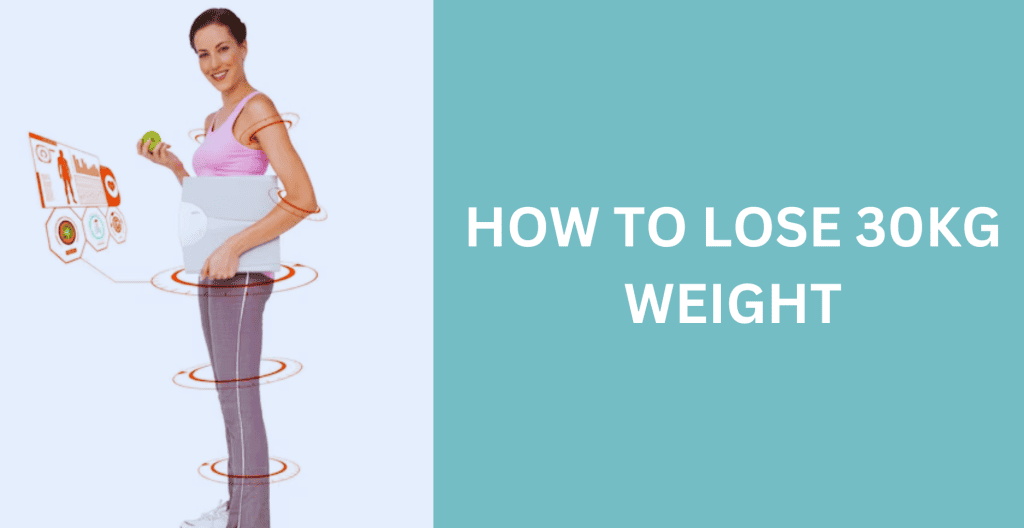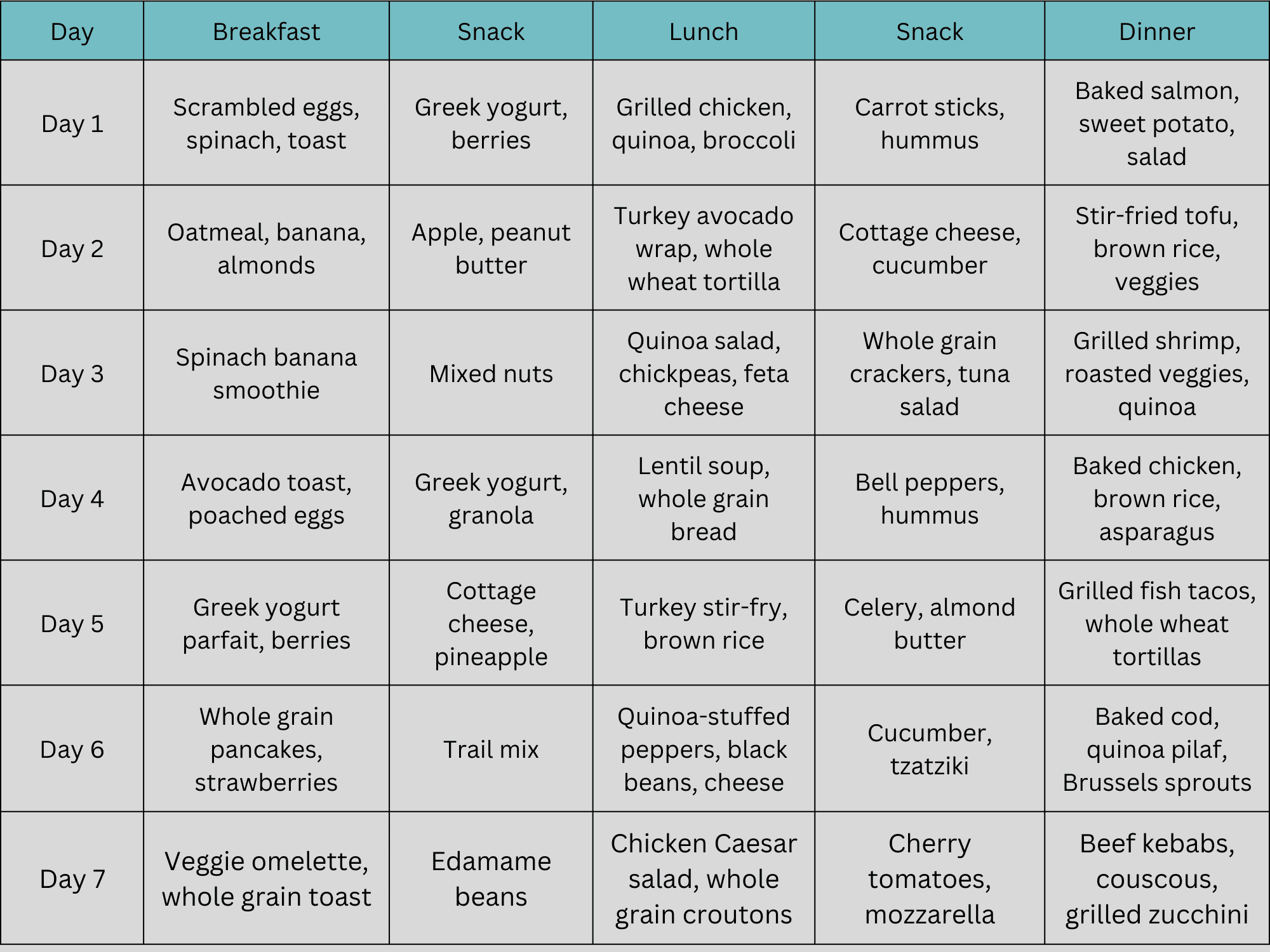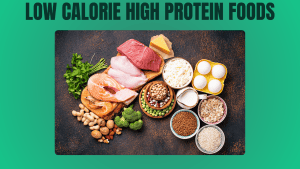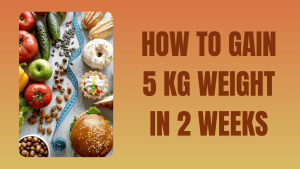According to Dr SakLosing 30 kg of weight requires a comprehensive approach that combines dietary modifications, exercise, and lifestyle changes. Initially, consulting with a healthcare professional to develop a personalised plan is essential. This plan typically includes a balanced diet rich in nutrients while being calorie-controlled, incorporating regular physical activity, and addressing any underlying health issues that may contribute to weight gain. Consistency and patience are crucial, as significant weight loss takes time and effort. Monitoring progress and making adjustments as needed are also vital for long-term success.
Recently, one of our clients, Asmath, a 32-year-old Indian woman residing in Dubai, achieved remarkable success in her weight loss journey. Starting at 120 kgs and facing Grade 3 obesity, Asmath sought assistance with a specific focus on a non-vegetarian balanced diet plan comprising Indian meals. Dealing with irregular periods and increasing cyst sizes in her ovaries, she committed to a tailored low glycemic index (GI) meal plan for 9-10 months. Through her dedication and perseverance, Asmath shed almost 30 kgs, now weighing 94 kgs. Notably, her insulin sensitivity improved, and her menstrual cycle normalised, showcasing the holistic benefits of her lifestyle changes.
Asmath’s inspiring story of achieving a remarkable 26 kg weight loss underscores the importance of tailored approaches and commitment. Let’s delve deeper into the science behind losing 30 kgs in this blog ahead!
Is It Possible To Reduce 30 Kg Weight?
Yes, reducing 30 kg (approximately 66 pounds) of weight is possible, but it’s essential to approach it healthily and sustainably. To lose weight, you need to familiarise yourself with calorie deficits. It refers to eating fewer calories than the number of calories the body burns. One important question that may arise here is how many calories should i eat in a day, and the answer to this, suggested by studies, is 2500 for men and 2000 for women.
Further, another noteworthy point is that rapid weight loss can be harmful to your health and is often not sustainable in the long term. Instead, focus on gradual lifestyle changes promoting overall health and well-being. This may include adopting a balanced diet rich in fruits, vegetables, lean proteins, and whole grains while reducing consumption of processed foods, sugary drinks, and unhealthy fats. Additionally, incorporating regular exercise into your routine, such as cardio, strength training, and flexibility exercises, can help with weight loss and improve overall fitness. It’s also essential to prioritise getting enough sleep, managing stress, and staying hydrated. By making these changes, you can achieve gradual and sustainable weight loss while improving your overall health.
7 Days Diet Chart To Lose 30 Kg Weight
Weight loss is best achieved through dietary modifications, increased physical activity, and lifestyle changes. However, it’s important to note that aiming to lose such a significant amount of weight quickly can pose health risks and may not be feasible or safe for everyone. Therefore, the focus should be on gradual and healthy weight loss strategies that promote long-term success and overall well-being. This 7 day diet plan is designed to provide a balanced mix of nutrients while creating a calorie deficit to support weight loss goals. Each day’s meals are carefully curated to offer a variety of flavours and ingredients, ensuring satisfaction and nutritional adequacy.
Remember to consult a healthcare professional before starting any weight loss regimen, especially if you have underlying health conditions or dietary restrictions. Let’s delve into the detailed day-wise diet chart to kickstart your journey towards a healthier lifestyle. Here’s a table summarising the 7 days diet plan for weight loss:
8 Ways On How To Lose 30 Kg
The capacity to establish and maintain a workout regimen emerges as a significant indicator of achieving success in the ongoing management of overweight and obesity. The specifics of the exercise program, including its intensity, duration, frequency, and type, vary from person to person based on factors such as existing medical conditions, prior activity levels, physical restrictions, and personal inclinations. Skipping for weight loss could be an excellent way to start your journey. Now, we shall be discussing the ways to achieve targets like how to lose 30 kg weight:
1. Increase Protein Intake
Why this is important: Protein is crucial for various bodily functions, including building and repairing tissues, regulating hormones, and supporting immune function. When it comes to weight loss, protein plays a vital role in preserving lean muscle mass, which is essential for maintaining a healthy metabolism. Additionally, protein has a higher thermic effect compared to carbohydrates and fats, meaning it requires more energy to digest, which can boost calorie expenditure.
How: To increase protein intake, include sources such as lean meats like chicken, turkey, and beef, fatty fish like salmon and tuna, eggs, dairy products like Greek yogurt and cottage cheese, legumes like beans and lentils, nuts, seeds, and tofu. Aim to distribute protein intake evenly throughout the day, including protein-rich foods in each meal and snack. For example, have eggs or Greek yoghurt for breakfast, add grilled chicken or tofu to salads for lunch, and include fish or lean beef in dinners.
2. Add Fiber Rich Foods To Your Diet
Why this is important: While both fats and carbohydrates are essential macronutrients, consuming them in excess, especially from unhealthy sources, can contribute to weight gain. Foods high in unhealthy fats and refined carbohydrates tend to be calorie-dense and low in nutrients, making them easy to overeat and leading to weight gain.
How: Limit or avoid processed foods, fried foods, sugary snacks, desserts, white bread, pasta, pastries, and sugary beverages. Instead, focus on whole, minimally processed foods like fruits, vegetables, lean proteins, whole grains, nuts, and seeds. Choose healthier sources of fats such as avocados, nuts, seeds, olive oil, and fatty fish like salmon. Opt for complex carbohydrates like whole grains, legumes, and starchy vegetables, which provide sustained energy and essential nutrients.
3. Avoid Fat & Carbs Rich Foods
Why this is important: While both fats and carbohydrates are essential macronutrients, consuming them in excess, especially from unhealthy sources, can contribute to weight gain. Foods high in unhealthy fats and refined carbohydrates tend to be calorie-dense and low in nutrients, making them easy to overeat and leading to weight gain.
How: Limit or avoid processed foods, fried foods, sugary snacks, desserts, white bread, pasta, pastries, and sugary beverages. Instead, focus on whole, minimally processed foods like fruits, vegetables, lean proteins, whole grains, nuts, and seeds. Choose healthier sources of fats such as avocados, nuts, seeds, olive oil, and fatty fish like salmon. Opt for complex carbohydrates like whole grains, legumes, and starchy vegetables, which provide sustained energy and essential nutrients.
4. Get Your Portion Size Right
Why this is important: Portion control is essential for managing calorie intake and preventing overeating. Even healthy foods can contribute to weight gain if consumed in large quantities. Controlling portion sizes helps regulate calorie intake, promoting weight loss and weight maintenance.
How: One of the ways to control your portion and calories, you add zero calorie foods to your routine. Zero calorie foods and drinks examples include coffee, apples, cucumbers, carrots and more. Further, avoid eating directly from large containers or packages, as it can lead to mindless eating. Instead, portion out servings onto plates or bowls to help control intake. Listen to your body’s hunger and fullness cues, stopping eating when you feel satisfied rather than overly full.
5. Perform 45 Minutes Of HIIT Workout At Least 2-3 Times A Day
Why this is important: Performing 45 minutes of HIIT workout at least 2-3 times a day helps you burn many calories. And we know to lose weight, one has to burn more calories than they eat. These numbers vary for everyone based on weight, height, medical condition, etc. Hence, the knowledge of ‘how many calories should I burn a day’ is important. High-Intensity Interval Training (HIIT) involves short bursts of intense exercise followed by brief rest periods. It is an effective workout for burning calories, increasing metabolism, and improving cardiovascular fitness. HIIT workouts also stimulate muscle growth and can help preserve lean muscle mass during weight loss.
How: Incorporate HIIT exercises such as sprinting, jumping jacks, burpees, high knees, and mountain climbers into your workout routine. Start with a 5-10 minute warm-up, then alternate between periods of high-intensity exercise and recovery periods for a total of 45 minutes. Aim for at least 2-3 HIIT sessions per week, allowing for adequate rest and recovery between workouts. Gradually increase the intensity and duration of your HIIT workouts as your fitness level improves.
6. Follow Intermittent Fasting
Why this is important: Intermittent fasting involves cycling between periods of eating and fasting. It can help control calorie intake, improve insulin sensitivity, and promote fat loss by extending the fasting period between meals.
How: Choose a fasting schedule that works for you, such as the 16/8 method (fasting for 16 hours and eating within an 8-hour window) or the 5:2 method (eating normally for five days and restricting calories for two non-consecutive days). During fasting periods, consume calorie-free beverages like water, herbal tea, or black coffee to stay hydrated and curb hunger. Focus on nutrient-dense foods like fruits, vegetables, lean proteins, and whole grains during eating windows to support overall health and weight loss goals.
7. Consume Drinks To Increase Metabolism
Why this is important: Certain beverages contain compounds like caffeine and catechins that can boost metabolism, increase energy expenditure, and aid in weight loss when consumed as part of a balanced diet and lifestyle.
How: Drink green tea, black coffee, or herbal teas to increase metabolism and promote fat burning. These beverages can be consumed hot or cold throughout the day as a calorie-free option to stay hydrated and curb cravings. Limit sugary and high-calorie beverages like soda, energy drinks, and sweetened coffee drinks, which can contribute to weight gain and interfere with weight loss efforts. Aim to drink at least 8-10 cups of water per day to support hydration and overall health.
8. Avoid Carbonated Drinks And Processed Foods
Why this is important: Carbonated drinks are often high in sugar and calories, leading to weight gain and increased risk of chronic diseases like obesity, type 2 diabetes, and heart disease. Processed foods are typically high in unhealthy fats, sugars, and additives, contributing to overeating and poor nutritional intake.
How: Opt for water, herbal teas, or infused water instead of carbonated drinks to stay hydrated without consuming excess calories and sugar. Choose whole, unprocessed foods like fruits, vegetables, lean proteins, and whole grains over processed snacks, fast food, and convenience foods. Read labels and ingredient lists to avoid hidden sugars, unhealthy fats, and artificial additives in processed foods. Instead, focus on incorporating nutrient-dense foods into your diet to support overall health and weight loss goals.
Foods To Avoid When Losing 30 Kg Weight
Losing 30 kg is a significant weight loss journey, and while it’s commendable, it’s crucial to approach it with proper guidance and focus on overall health and sustainability. While focusing on specific foods to limit can be helpful, it’s important to understand the “why” behind these choices and integrate them into a balanced, personalised approach. Here’s a detailed breakdown of foods to consider limiting, along with explanations and alternatives:
1. Sugary Drinks
- Why limit them: These drinks are loaded with empty calories (meaning they provide little to no essential nutrients) and can significantly contribute to weight gain.
- Examples: Soda, commercially-produced juices, sports drinks, energy drinks, sweetened iced tea/coffee, and flavoured waters.
- Alternatives: Opt for water, unsweetened tea/coffee (black, green, herbal), sparkling water with a squeeze of lemon or lime, or homemade fruit-infused water.
2. Refined Carbohydrates
- Why limit them: These carbs are quickly digested, causing blood sugar spikes and crashes, increasing hunger and cravings. They are also often low in fibre and essential nutrients.
- Examples: White bread, pastries, muffins, bagels, white rice, pasta made with refined flour, sugary breakfast cereals, and commercially baked goods (cookies, cakes, doughnuts).
- Alternatives: Choose whole grains like brown rice, quinoa, whole-wheat bread, oats, barley, and whole-wheat pasta. These provide sustained energy, fiber, and essential nutrients.
3. Deep-Fried Foods
- Why limit them: Deep-frying adds significant amounts of unhealthy fats (saturated and trans fats) and calories to food. These fats can increase LDL (“bad”) cholesterol and contribute to heart disease.
- Examples: French fries, onion rings, fried chicken, fried fish, commercially fried snacks like chips and nuggets.
- Alternatives: Baking, grilling, roasting, and air-frying are healthier cooking methods that use minimal oil while retaining flavour. Opt for grilled chicken, baked fish, air-fried vegetables, or homemade roasted snacks like chickpeas or kale chips.
4. Processed Meats
- Why limit them: These meats are often high in sodium, nitrates, and unhealthy fats. They have been linked to an increased risk of heart disease, type 2 diabetes, and certain cancers.
- Examples: Hot dogs, bacon, sausages, salami, pepperoni, deli meats, processed meat burgers, canned meats.
- Alternatives: Choose lean cuts of unprocessed meats like chicken breast, fish, turkey breast, or legumes like lentils and beans as protein sources.
5. Sugary Snacks and Desserts
- Why limit them: These are often loaded with sugar, unhealthy fats, and refined carbohydrates, offering little to no nutritional value and contributing to weight gain.
- Examples: Cookies, cakes, pastries, candy bars, ice cream, sugary yoghurt, and commercially prepared desserts.
- Alternatives: Make healthier dessert choices like fresh fruit with yoghurt, dark chocolate (in moderation), baked apples with cinnamon, homemade energy bites with nuts and dried fruit, or frozen yoghurt with no added sugar.
6. High-sodium condiments and Sauces
- Why limit them: Excessive sodium intake can contribute to high blood pressure and water retention, making weight loss more challenging.
- Examples: Ketchup, mayonnaise, salad dressings, soy sauce, teriyaki sauce, marinades with high sodium content, pre-packaged seasoning mixes.
- Alternatives: Use herbs and spices to add flavour to your food. Opt for low-sodium versions of condiments, or make your salad dressings with olive oil, vinegar, and spices. Be mindful of the sodium content when choosing sauces and marinades.
Exercises To Lose 30 Kg Weight
To lose 30 kg of weight, a combination of cardiovascular exercises, strength training, and flexibility exercises is essential. Cardio exercises like running, cycling, or swimming help burn calories, while strength training builds muscle mass and boosts metabolism. Incorporate movement throughout your day. Take the stairs, park farther away, or do short bodyweight exercises during commercial breaks. Every bit counts! Additionally, incorporating flexibility exercises like yoga or stretching improves mobility and reduces the risk of injury. Here are four exercises that can aid in achieving goals like ‘how to lose 30 kg weight:
1. Brisk Walking or Jogging
- Walking or jogging at a brisk pace for 30-60 minutes can help burn calories and improve cardiovascular health.
- Brisk walking or jogging is an excellent way to burn calories, improve cardiovascular health, and aid in weight loss.
- Start with a 5-10 minute warm-up, then gradually increase your pace to a brisk walk or jog for 30-60 minutes.
- Aim for a heart rate that elevates your breathing but allows you to converse.
- Incorporate walking or jogging into your daily routine, such as walking to work or jogging in the park, to ensure consistency.
2. Interval Training
- High-Intensity Interval Training (HIIT) is a form of exercise that alternates between short bursts of intense activity and brief rest periods or low-intensity exercise.
- HIIT workouts can include exercises like jumping jacks, burpees, mountain climbers, or sprinting.
- Perform each high-intensity exercise for 20-30 seconds, followed by 10-20 seconds of rest or lower-intensity exercise.
- Repeat this cycle for 15-30 minutes, gradually increasing intensity and duration as you build stamina.
2. Strength Training
- Strength training is essential for building muscle mass, increasing metabolism, and enhancing overall body composition.
- Incorporate compound exercises that target multiple muscle groups simultaneously, such as squats, lunges, push-ups, and deadlifts.
- Start with light weights or bodyweight exercises and gradually increase resistance as you gain strength.
- Aim for 2-3 weekly strength training sessions, allowing 48 hours of rest between sessions to allow muscles to recover and grow.
3. Cycling or Stationary Biking
- Cycling outdoors or on a stationary bike is an effective, low-impact exercise for burning calories and improving cardiovascular fitness.
- Adjust the resistance or incline on the stationary bike to vary the intensity of your workout.
- Aim for a mix of steady-state cycling and interval training to challenge different energy systems and muscle groups.
- Start with 20-30 minutes of cycling and gradually increase duration and intensity as your fitness level improves.
4. Swimming
- Swimming is a full-body workout that engages multiple muscle groups while being gentle on the joints.
- Incorporate different swimming strokes like freestyle, backstroke, breaststroke, and butterfly to target various muscle groups.
- Aim for 30-60 minutes of swimming per session, varying intensity and strokes to keep the workout challenging.
- If you’re new to swimming, consider taking lessons or swimming with a friend to improve your technique and build confidence in the water.
Benefits Of Diet Plan To Lose 30 Kg Weight
Extensive research indicates that weight loss among overweight or obese individuals yields notable physiological advantages, such as decreased diabetes risk, lowered blood pressure, and improved blood lipid levels. Consequently, numerous weight loss interventions prioritise strategies to reduce weight and enhance overall physiological well-being. Obese individuals often face stigma, being labelled as lazy or lacking willpower. This stigma is linked to lower self-esteem, depressive symptoms, and a diminished quality of life. Weight loss plans such as the 800 calorie Indian diet plan can help improve these psychological outcomes (as well as well-being), potentially increasing the chances of maintaining successful weight loss. Let us look at the benefits of a diet plan to achieve goals like ‘How to Lose 30 kg weight’:
- Positive Impact on Heart Health
- Reduction in Inflammatory and Thrombotic Factors
- Reduces the risk of Cancer
- Improved Sleep and Reduces Joint Pain
1. Positive Impact on Heart Health
Weight loss not only aids in shedding excess pounds but also contributes significantly to heart health. Research indicates that weight loss is closely linked with favourable changes in lipid levels and blood pressure, key factors in reducing the risk of cardiovascular diseases (CVDs) such as heart attacks and strokes. Moreover, weight loss is known to lower insulin levels, which not only helps in preventing diabetes but also plays a crucial role in reducing cardiovascular risk. Studies have shown that individuals who undergo weight loss interventions experience significant improvements in insulin sensitivity, which translates to better heart health outcomes. Additionally, the reduction in estrogen levels and the improvement in overall endocrine profiles resulting from weight loss are associated with a decreased risk of certain cancers, further highlighting the comprehensive benefits of weight loss on cardiovascular and overall health.
2. Reduction in Inflammatory and Thrombotic Factors
One of the lesser-known but equally important benefits of weight loss diets is their potential to mitigate inflammation and reduce the risk of thrombosis. As individuals shed excess weight, there is a notable decrease in pro-inflammatory cytokines, which significantly promote inflammation within the body. This reduction in inflammatory markers is crucial as chronic inflammation is linked to the development of various diseases, including CVDs and certain cancers. Furthermore, weight loss interventions have been shown to improve the thrombotic profile, reducing the risk of blood clots that can lead to life-threatening conditions such as deep vein thrombosis and pulmonary embolism. By addressing these inflammatory and thrombotic factors, weight loss diets offer holistic benefits beyond just shedding pounds, promoting overall well-being and longevity.
3. Reduces the risk of Cancer
Weight loss diets not only aid in achieving a healthier weight but also play a crucial role in reducing cancer risk. The correlation between weight loss and decreased cancer risk is multifaceted. Firstly, weight loss leads to a reduction in insulin secretion, which in turn helps in lowering the risk of cancer development. Insulin promotes cell growth and proliferation, and elevated insulin levels have been linked to an increased risk of various cancers. Additionally, the reduction in estrogen levels and the improvement in endocrine profiles resulting from weight loss contribute to a decreased risk of hormone-related cancers such as breast and ovarian cancer. By addressing these underlying hormonal and metabolic factors, weight loss diets offer a promising avenue for cancer prevention and overall health promotion.
4. Improved Sleep and Reduces Joint Pain
Beyond its effects on cardiovascular and cancer risk, weight loss diets offer significant relief for individuals suffering from sleep apnoea and osteoarthritis. Sleep apnoea, characterised by interrupted breathing during sleep, is closely associated with obesity. However, studies have shown that weight loss can improve sleep apnoea severity and frequency, enhancing sleep quality and overall well-being. Additionally, weight loss can alleviate the symptoms of osteoarthritis by reducing the burden on weight-bearing joints. As individuals shed excess weight, there is a decrease in pressure on the joints, resulting in reduced pain and improved mobility. By addressing these common comorbidities of obesity, weight loss diets promote physical health and enhance overall quality of life.
How To Lose 30 Kg Weight In A Healthy Way?
According to researchers, the effectiveness of strategies such as meal replacement, low carbohydrate-low glycemic index (GI) diets, increased protein intake, and moderate fat consumption in weight maintenance has been observed, albeit with controversial outcomes.
Apart from diet plans designed for weight loss, there are various home therapies for weight loss, including water therapy, green tea, lemon juice, reduction in carbohydrate intake, apple cider vinegar, and garlic to lose weight naturally and in a healthy way! Water is emphasised for its role in weight reduction, toxin elimination, and metabolism improvement. Green tea enhances fat-burning and energy expenditure, while lemon juice aids digestion, detoxification, and weight loss through polyphenols. Reduction in carbohydrate intake is linked to lower sugar consumption and potential weight loss. Apple cider vinegar aids in fat-burning, insulin regulation, and toxin elimination. These therapies offer natural approaches to weight management, targeting various aspects of metabolism and digestion. However, further research is needed to understand their long-term effects on weight reduction fully. Here are some practices you may consider to achieve targets like ‘how to lose 30 kg weight’:
- Creating a calorie deficit: Consume slightly fewer calories than you burn daily, but not excessively. Aim for gradual, healthy weight loss of 0.5-1 kg weekly.
- Prioritising whole, unprocessed foods: Fill your plate with fruits, vegetables, whole grains, lean protein, and healthy fats.
- Engaging in regular physical activity: Aim for at least 150 minutes of moderate-intensity cardio or 75 minutes of vigorous-intensity cardio most of the week, plus strength training 2-3 times a week.
- Staying hydrated: Drink plenty of water throughout the day to support metabolism and overall health.
- Use Resources at Home: During a weight loss journey, utilising resources like weight loss blogs can provide valuable tips, motivation, and support from others sharing similar experiences. Online tools such as the Ideal weight calculator estimate your ideal weight based on various factors such as height, age, gender, and activity level. This may help you set realistic weight loss goals and track your progress towards achieving a healthier weight.
Expert Review On How To Lose 30 Kg Weight
According to Dr Sakshi Gupta, who is a certified nutritionist and expert dietician, losing 30 kg requires a comprehensive approach involving dietary changes, exercise, and lifestyle adjustments. Seeking guidance from a healthcare professional is essential to tailor a plan suited to individual needs, focusing on a balanced diet, regular exercise, and addressing underlying health issues. Consulting with a healthcare professional is crucial to develop a personalised plan tailored to individual needs, avoiding trendy or unproven practices like the IU diet plan for weight loss is also advisable.
It’s vital to prioritise health and sustainability, opting for gradual lifestyle changes rather than quick fixes. This involves adopting a balanced diet, regular exercise, stress management, and hydration. Additionally, engaging in exercises like brisk walking, interval training, strength training, cycling, or swimming can aid weight loss. Weight loss offers numerous benefits, including improved heart health, reduced inflammation, lowered cancer risk, improved sleep, and decreased joint pain. Strategies like creating a calorie deficit, prioritizing whole foods, and utilising online resources can support a healthy weight loss journey.
References
Devanandan, Praveen. 2018. “(PDF) A Comprehensive natural ways to Lose Weight.” ResearchGate. https://www.researchgate.net/publication/322765579_A_Comprehensive_Review_on_natural_ways_to_Lose_Weight
Hall, Kevin D. n.d. “Maintenance of lost weight and long-term management of obesity.” NCBI. Accessed March 5, 2024. https://www.ncbi.nlm.nih.gov/pmc/articles/PMC5764193/
“Weight-Loss and Maintenance Strategies – Weight Management.” n.d. NCBI. Accessed March 5, 2024. https://www.ncbi.nlm.nih.gov/books/NBK221839/
FAQs
1. How Can I Lose 30 Kg In A Week?
Losing 30 kg in a week is not safe or realistic. Rapid weight loss like this can be harmful to your health and may not be sustainable. It’s important to focus on gradual and healthy weight loss methods, such as eating a balanced diet, exercising regularly, and getting enough sleep.
2. How Long Will It Take To Lose 30kg Weight?
The time it takes to lose 30 kg depends on various factors like your starting weight, metabolism, diet, and exercise habits. Generally, aiming to lose 0.5 to 1 kg per week is considered safe and achievable. So, it could take around 6 months to a year or more to lose 30 kg healthily and sustainably.
3. Is Losing 30 Kgs Weight Possible?
Yes, losing 30 kg is possible, but it requires commitment, patience, and making lifestyle changes. It’s important to set realistic goals and focus on sustainable methods rather than quick fixes or extreme diets. By adopting a balanced diet, regular exercise routine, and healthy habits, you can achieve your weight loss goals over time.
4. How Fast Can I Lose 30 Kg Weight?
Losing weight too quickly, such as attempting to lose 30 kg in a short period, can be detrimental to your health. Rapid weight loss often leads to muscle loss, nutrient deficiencies, and other health complications. Aim for gradual weight loss of about 0.5 to 1 kg per week, which is considered safe and sustainable. By making healthy lifestyle changes, including eating a balanced diet and exercising regularly, you can achieve your weight loss healthy and sustainable manner.
5. How To Lose 30 Kg Weight In A Week?
Attempting to lose 30 kg in just one week is not advisable and can be extremely harmful to your health. Extreme methods like crash diets, fasting, or excessive exercise can lead to severe health issues such as dehydration, malnutrition, and muscle loss. Instead, focus on making long-term lifestyle changes that promote healthy weight loss. Eat a balanced diet rich in fruits, vegetables, lean proteins, and whole grains, while also incorporating regular physical activity and staying hydrated.










